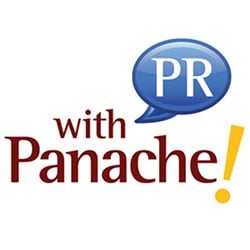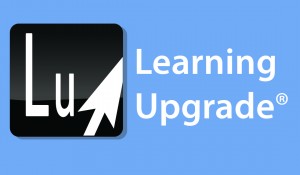How mixing online learning with class time caused one district to boost its students’ summer-school scores.
By Christopher Miller
In New Jersey’s Morris School District, summer school is a priority. The district’s program has been successful and engaging for many years, but in 2014 Morris schools tweaked the model to further boost results. Our summer school now features blended learning as another way to engage and motivate students during these months. Because of our careful planning and execution, the summer of 2014 was an overwhelming success.
During the 2013-14 school year, our curriculum team dedicated time and resources to identify better ways technology could enrich students’ summer school experience, and we chose a blended learning curriculum that included CCSS-based concepts and resources such as songs, games, and video to reach even the most reluctant students. In addition to finding the right resources, it was incredibly important for us to collect individual student data to further inform our instruction, track concept mastery, and reward individual learning gains. Summer can be an important learning time for students, and we saw this approach as a way to build on the previous year’s success. Our vision for taking a blended approach to summer school was to reach students in ways they enjoy, that keep their attention, and that build their confidence.
As Morris schools’ K-12 coordinator for the extended school year, I know the key to success in our long-standing summer school program has been the detailed collection of actionable data. Prior to beginning summer school, our teachers are provided with individual data on each student. At Morris, we use a variety of metrics to admit students into our Basic Skills Instruction program (BSI). We measure the number of times a student needs to be taught something before he or she achieves mastery, and we note any signs of regression. It is equally important that our summer school teachers receive anecdotal feedback on each student; to do this, we ask our regular-session teachers to keep notes on students: how they like to learn, what excites them, and where they may need additional help to ensure our summer school instructors have as much information as possible.
At Morris, BSI is designed for specially selected students in grades 3-5 and focuses specifically on building capacity in language arts and math. The goal of the BSI program is to ensure students master Common Core State Standards skills by reinforcing what was learned in the grade they just finished. These students have been identified by predetermined benchmarks as kids who would benefit from additional support over the summer.
The Blended Program
During previous years, we frontloaded a lot of the work a successful summer school program requires. Lessons were prepared in advance that improved reading, writing, and math scores. In class, writing units were chosen to address the following year’s prerequisite CCSS skills at the students’ level. Math lessons focused on basic skills, math-fact fluency, and foundational concepts for the next grade. Direct, individual instruction is the goal, but even with the most conscientious preparation, achieving that isn’t easy. We’ve experimented with different programs for years and found that a blended model keeps kids engaged in developmentally appropriate and beneficial projects.
One method we have used successfully is individual or small-group workstations that allow students to explore the material independently. Because a teacher can only be at one station at a time, one of our challenges has been creating an atmosphere of constant engagement for those students whose attention tends to wander.
Our district has always placed an emphasis on good data, and a blended learning program with the ability to track students’ progress has made that much more of a difference. Starting in the summer of 2014, our teachers combined station-rotation learning and technology so students could work individually or in small groups to review old skills or gain exposure to new ones, including the lessons that include music, games, and videos. This blended approach led to continuous instruction throughout the school day for each child.
Most of our summer-school teachers agreed that the blended learning approach improved the session. By blending personalized online instruction with in-class teaching, students engaged in targeted material. The teacher rotated ability-based groups to target students at their level. As we continue our program, we will keep class size low (8-10 students) and use a platform that will allow teachers to flag students who may be struggling with a certain concept and provide them with one-on-one or small-group instruction.
Results Are In
Here is how we know last summer’s “experiment” is working: A majority of students made major gains in math proficiency, logging more than 560 hours on Learning Upgrade’s online courses last year. Each student benefited from the new approach, overall student engagement was extremely high, and parent feedback was outstanding.
The key to students’ approval has been the extra emphasis on engagement through motivation. While the goal is to get kids excited about learning itself, extrinsic motivators can be a big help. Morris School District uses a reading log program and an attendance incentive—if the weekly objectives are met, students take home a prize on the last school day of the week. We hold morning meetings to start the day to get kids pumped up about what they’ll be doing for the next few hours, which is really important, as they know their peers are outside and having fun. We also make sure that summer school is not a repetition of what students have been doing during the regular school year.
The summer session culminates in rewards for the top five readers and those with perfect attendance. The awards give students a sense of pride as well. I received a message from one of last year’s top five readers, thanking me for summer school—she told me she was very proud of what she was able to accomplish. For an educator, it doesn’t get much better than that.
At Morris, our planning paid off. We implemented a strong, data-centered blended learning model and it worked for staff and students alike. Teachers had a leg up by receiving individualized data on each student, and the ability-based groupings in small classrooms and rotation-station model helped to increase one-on-one time and an engaging curriculum. We’ve found that when summer school is less like “real school,” with games, songs, a new format, and a motivating atmosphere, kids stay engaged longer.
Christopher Miller (Christopher.miller@msdk12.net) is K-12 extended school year coordinator for the Morris School District, in Morristown, New Jersey.


